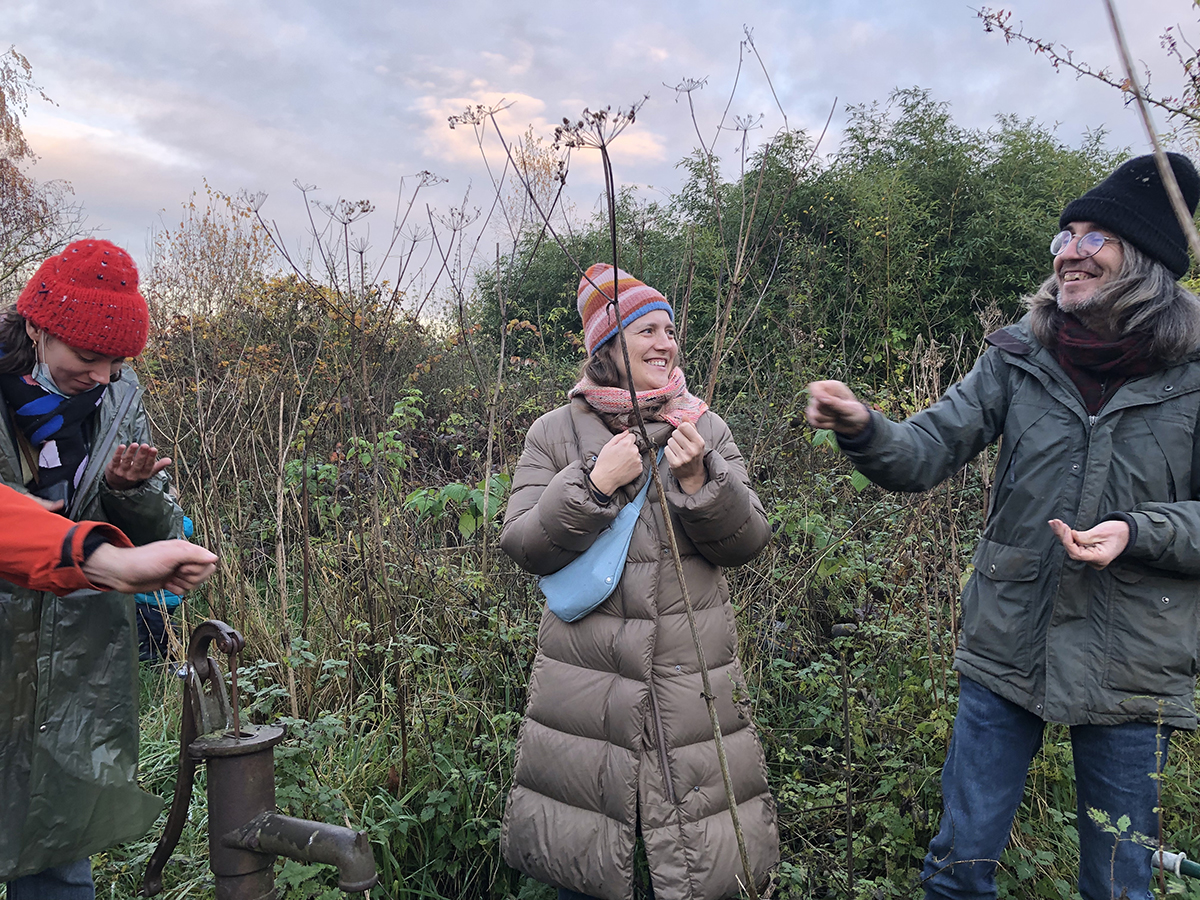A conversation with the Center for Genomic Gastronomy (CGG) about the first phase of their residency.
Artists Emma Conley, Cathrine Kramer and Zack Denfeld are currently completing the research phase of their S+T+ARTS4WATER project, focusing on water management and food forest maintenance in the Netherlands.
What does your project look like at the moment?
“We just presented the project last Thursday to our local expert group. We noticed that right now, we tend to move in a cycle of proposing ideas, gaining information from the experts, coming back to the project again with newly acquired knowledge, proposing more ideas, etcetera. I think at the moment we acquired a lot of underground knowledge of the geology of the sites we’re interested in, which are the Hoge Veluwe and the Ketelbroek Food Forest in Groesbeek.”
What would you like to achieve in the end?
“The aspects of biodiversity and water management are important for us, so one of our potential goals is to mirror this in our artwork. Also, there are 32 different plant species on the Ketelbroek Food Forest site, so we might try to create an artwork that speaks to that level of complexity. However, one of the reasons we actually continued to work as artists, as opposed to designers for example, is that we do not always have to work goal-oriented. Our purpose focuses more on trying to capture the sublime, to excite a certain sense of wonder in our audience. An example of this is the feeling we got when we visited the food forest. It has a Korean pine nut tree with a lifespan of 1200 years. Just imagining that this tree is still going to be here when generations of humans and other vegetation have passed was really an inspiration for our project.”
How did you experience getting in contact with the collaborators surrounding your project?
“The V2_Lab for the Unstable Media in Rotterdam is our host, and since we have collaborated with them on a number of projects before, it was easy to pick up the conversation. We were there last week to see what other projects they are hosting. However, one of the challenges was that the other partner institutions didn’t really seem to know what they were signing up for. We really had to do some legwork to meet with farmers and other agents on site, and we are sometimes still not sure about how we can collaborate with them. It is fine for now, but we did realize that we probably need to make more of an effort.”
What other challenges did you come across during this research phase?
“Well, apart from time management, an interesting challenge is the way we as artists now have to work with science and technology and how artists can be a part of that cycle of innovation. Technology concerning sustainability is mainly designed to make things profitable and scalable, whereas art seems to have a very different purpose. It might be a challenge when you think about the fact that the S+T+ARTS4WATER framework comes from the level of the EU, concerning Green Deal guidelines and all that. We as artists need to take this seriously, but at the same time be critical and create our own ideas.”
What is next?
“We’re excited to continue the project moving into spring and experience the area through different seasons. We also look forward to our next visits, broadening the network of collaborators and explore other themes, such as ‘mockwild’: the artificial creation of wild conditions – which seems to be very present in the Netherlands.”
Text: Cato Boeschoten

